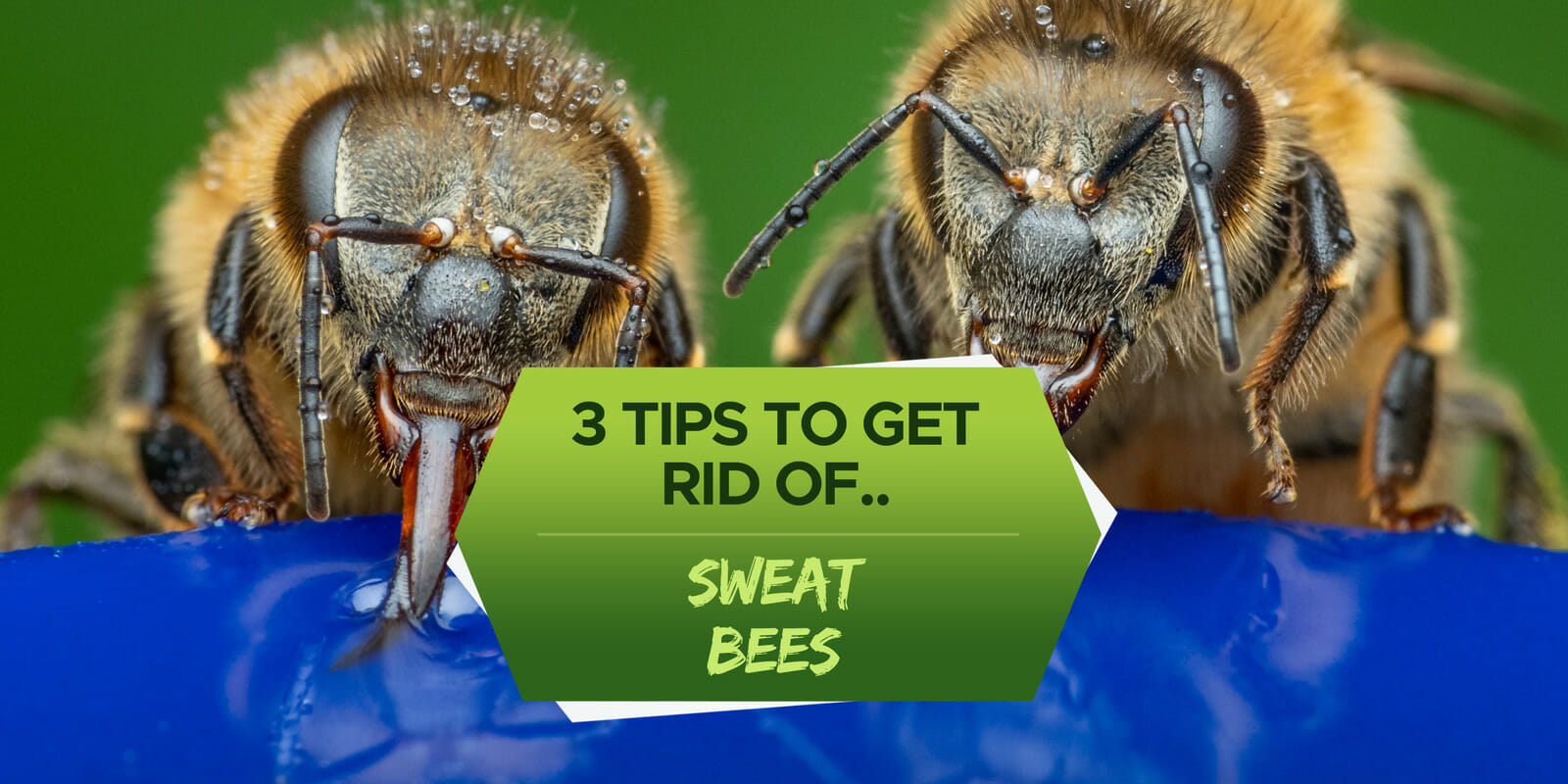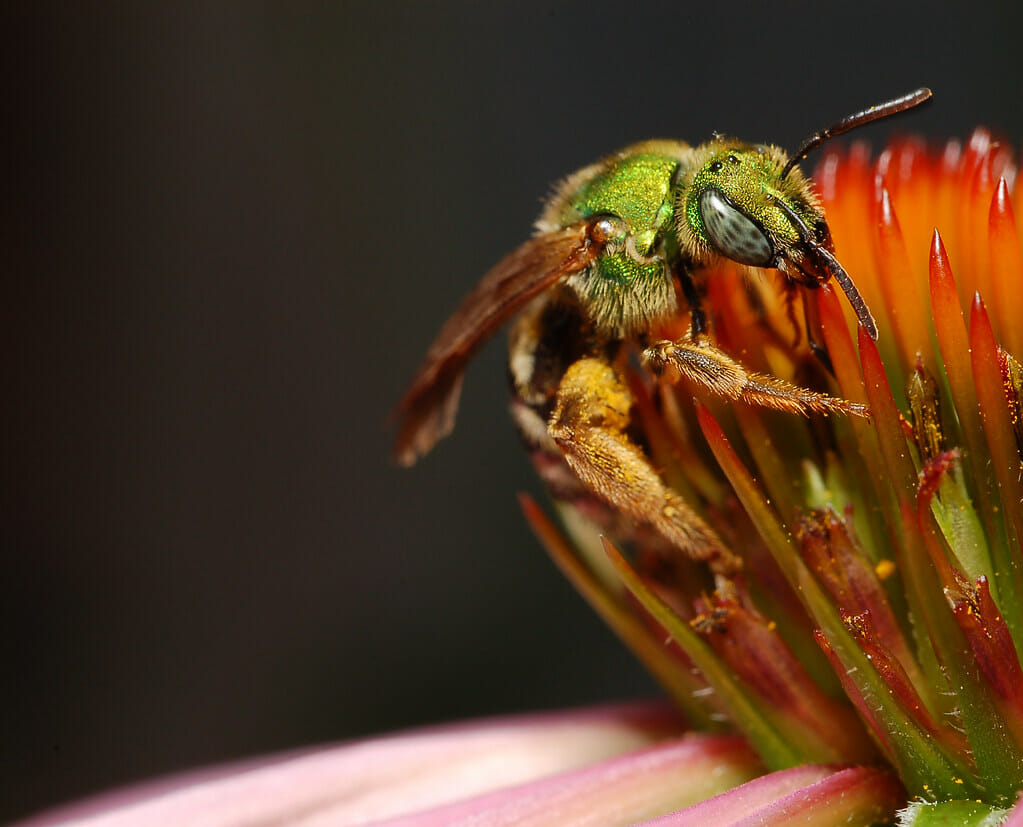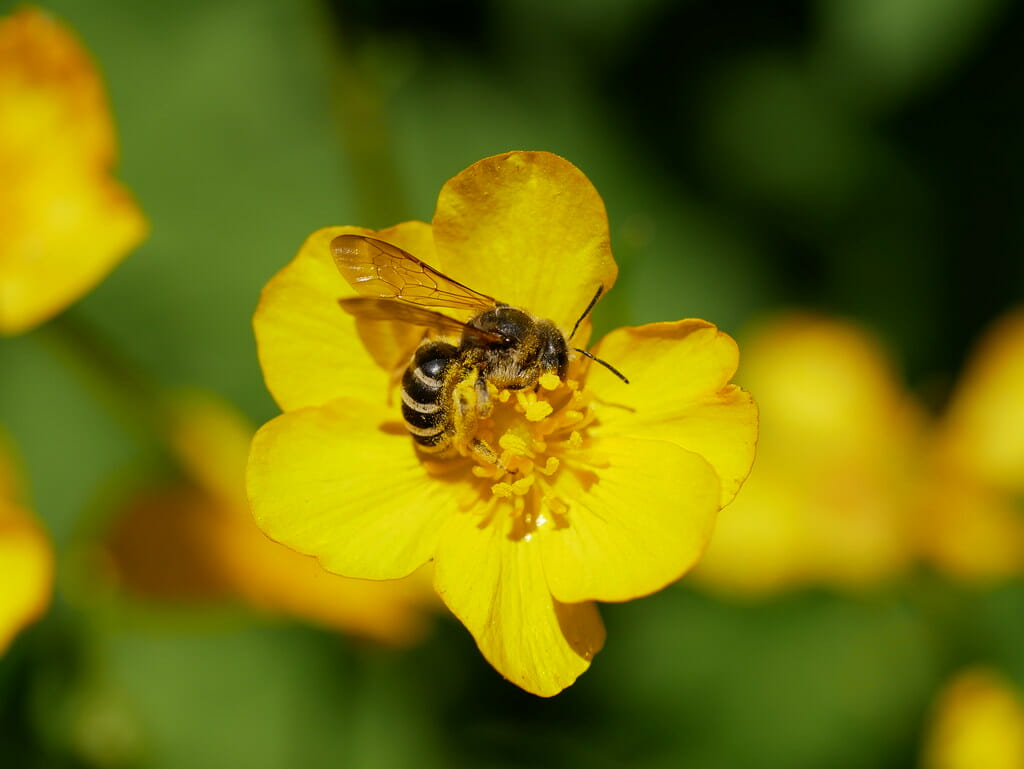Have you ever ventured into your garden on a balmy summer’s day with the intention to soak in the sun, only to be disturbed by tiny little bees buzzing around you? Well, you may have sweat bees.
All gardeners should welcome bees into their space, but it can get very frustrating when they fly around and try to land on you every time you take a step into the garden. So, what is the best way to get rid of sweat bees?
The easiest and most humane way to repel sweat bees from your property is using scents like essential oils or insect repellants or by making your garden inhospitable to them.
Bees are precious and crucial pollinators that need to be treated with care are redirected to another place rather than killed. Today we are here to show you how we and the bees can live in harmony.
This article will shed some light on sweat bees and help you learn how to get rid of them in the most gentle way possible.
What Are Sweat Bees?
Sweat bees is the name given to the family of Halictidae bees. These bees are smaller than your average honeybee and are unexpectedly bright in color.
Sometimes colloquially called ‘metallic bees,’ these delicate creatures sometimes have bright metallic green bodies, but they are also known to have banding as well as red markings. The features will vary from species to species.
Just like honey bees, sweat bees are important pollinators that feed on nectar and pollen.
Instead of living in hives, sweat bees make their nests in soil or rotten wood, often in holes left by birds or other insects. They will lay their eggs in these holes and deposit a ball of pollen inside to feed the young. However, there are some species of sweat bees that will nest in hives with other bee species.
But now, you might be wondering how sweat bees got their name.
The answer is a little weird. Sweat bees tend to be the most irritating bee species because they seem to be attracted to you when you are outside on a hot day. What they’re really attracted to is your sweat! The little bees will land on your skin and drink the sweat droplets to get moisture and salts.
This is the main reason that you may want to get rid of sweat bees because they tend to buzz around you in a very irritating manner if you are outside and happen to perspire just the tiniest bit.
The Difference Between Sweat Bees and Honey Bees
This might be the first time you are getting introduced to a new type of bee that is not a honeybee or bumble bee but don’t worry; we are here to help you sort out the differences.
When it comes to getting rid of bees, it is important to know what species you are dealing with, so you can execute it effectively.
So, how can you tell apart a sweat bee and a honey bee?
| Sweat Bees | Honey Bees | |
| Family | Halictidae | Apis mellifera |
| Color | Metallic green | Black and yellow bands |
| Size | ¼- ¾ inch | 0,8-1.6 inches |
| Habitat | Rotten wood and soil | Hives |
Apart from these differences, there are some more details that set them apart, such as wing venation and antenna structure, but we’ll leave that kind of nitty-gritty to the professionals!
The best way to tell if you are dealing with sweat bees is by paying close attention to their size and color when they happen to land on your skin.
While both of these bees will only sting if disturbed, the honey bee sting is far more painful and common than a sweat bee sting. This is why we would prefer to have sweat bees in your garden if we had to choose! If a sweat bee lands on your skin, don’t panic; either let it sit and allow it to fly away or gently push it off your skin, so you don’t startle or injure it.
The main difference that we want you to take away from this comparison is the habitat. Most of the time, honey bees will create their hives off the ground in a tree or man-made structure; however, sweat bees will nest in the ground. This makes sweat bees risky to have around because the likelihood of disturbing their nest is higher.
How to Get Rid of Sweat Bees
Like honey bees, sweat bees are essential pollinators that we excellent to have in your garden. However, since they build their nests on the ground, they can disturb your lawn if it gets too large.
You also risk your animals and small children getting stung if they inadvertently disturb the nest. This is particularly concerning if you have anyone in your household that is allergic to bees.
As we all know, it is imperative to get rid of sweat bees in a humane way, so here are three ways that we recommend getting sweat bees under control:
1. Diffuse Essential Oils
There are certain scents that bees are just not a fan of. We can use this to our advantage to keep the bees away from you.
We suggest using lemon, peppermint, clove, eucalyptus, or citronella essential oils. You can either dilute the oils in water and use a spray bottle to spritz it around, or you can use a diffuser. Conversely, you can dap a few drops of the oil on your skin at your pressure points
Our favorite way to use this deterrent is to set up a diffuser outside where you are hanging out, so the scent is wafted into the air, warning the bees to keep away even if there is a lot of tempting sweat around.
2. Limit Nesting Ability
One of the best ways to prevent sweat bees from becoming a problem in your yard is by making the conditions unfavorable for them to make their nests.
This means clearing any old wood that may be hanging around your garden, as this will make for tempting nest material. We also recommend keeping your soil moist since the bees prefer dry soil to build their nests. Growing ground cover over any bare spots will also discourage sweat bees from digging in your beds.
This is the best option if you prefer the bees to merely drop by your garden rather than setting up camp there.
3. Wear Insect Repellant
Applying some form of repellant before you go outside is a perfect way to keep the bees at bay. It will prevent bees from landing on your skin without harming the bees themselves in any way.
We suggest showering after any workouts or before you want to go into the garden to minimize the sweat on your skin and apply the, preferably natural, repellant to clean dry skin.
This way, you can relax outside in peace, and the bees can get along with pollinating your garden for you. You’ll hardly even know they’re there.
Frequently Asked Questions:
Are sweat bees endangered?
Unfortunately, like many bee species, sweat bee numbers are rapidly dropping every year, making them endangered.
They are an essential part of pollinating for many plants, including agricultural crops, so it is essential that we do all we can to look after bees and boost their numbers. This is why we encourage you to let the bees coexist with you if they are not causing any major distress.
How long do sweat bees live?
Like many bee species, sweat bees live for around three to four months.
Their lives are short, but they do so much good for the world in that short time. Some species of bees, however, can live up to 5 years!
Conclusion
Sweat bees, like any bees, are a vital part of our ecosystem, from our little gardens to nature at large, so it is imperative that we deal with them gently.
Luckily, as we have shown you, there are many options for getting rid of sweat bees that will not harm you or them. As long as you take some gentle precautions, you can live alongside the sweat bees in harmony as they pollinate your garden for you.
With the careful use of repellant scents, as well as keeping your soil moist, you will be able to keep the bees at bay without risking their safety.
We hope this guide has given you all the tools you need to handle all your bee problems and turn them instead into bee friends.





